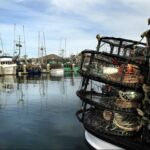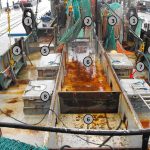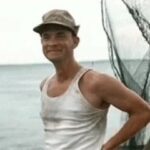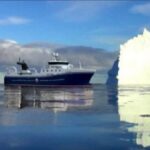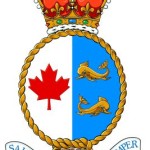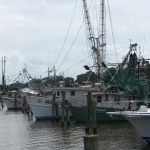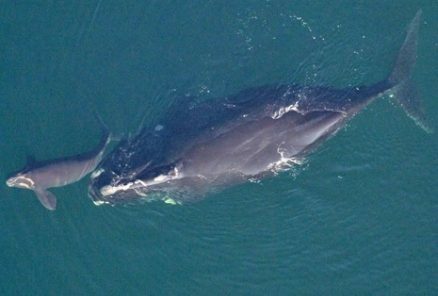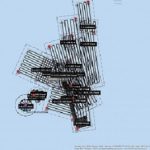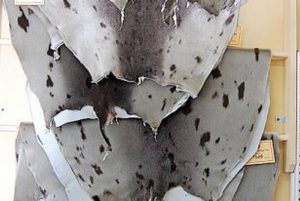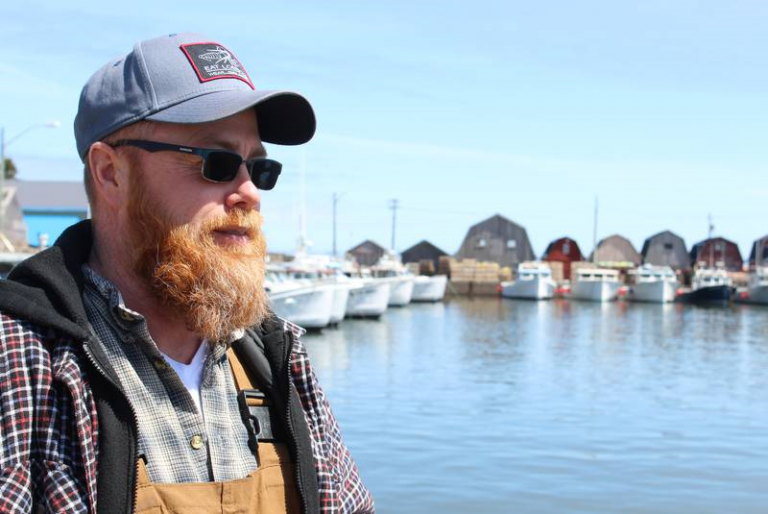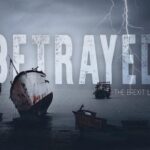Daily Archives: December 23, 2016
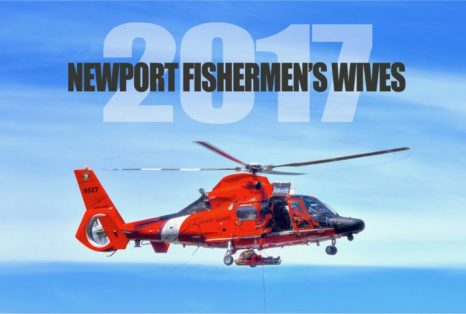
Fishermen’s Wives Calendar for 2017 now available!
Fishermen’s Wives are super proud of our 1st Newport Fisherman’s Wives Calendar and ever so thankful that we and the community came together to keep our Coast Guard Rescue Helicopter here in Newport to continue to save lives. We are also very thankful for photographer Ken Gagne and his amazing photos and the sponsors that purchased ads in the Calendar and the businesses that are selling it. 100% of the proceeds goes directly back to Newport Fishermen’s Wives to help our fishing fleet and our community. Read the rest, and there is a link to order yours today. 20:25
Lawsuit: Investment in Bahamian crab company nets $200,000 from Tampa businessmen
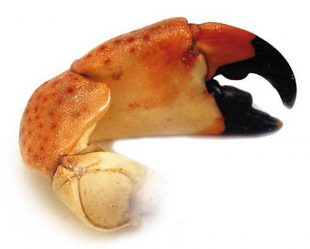 Brett Ory visited the Bahamas in May 2015 to see the crabbing company in which he and his father, Ronnie Ory, had invested $100,000. Brett Ory, 38, said he inspected a processing facility, fishing and stone crab trapping boats and 45 acres of prime property on the Bahamas Long Island, all supposedly controlled by Ruskin-based High Cotton Bahamas. A month later, Ory said he wired an additional $100,000 to High Cotton after its representatives told him they needed capital to buy more boats. But it turned out that High Cotton was something of an illusion, according to lawsuits filed by the Orys. Read the story here 18:52
Brett Ory visited the Bahamas in May 2015 to see the crabbing company in which he and his father, Ronnie Ory, had invested $100,000. Brett Ory, 38, said he inspected a processing facility, fishing and stone crab trapping boats and 45 acres of prime property on the Bahamas Long Island, all supposedly controlled by Ruskin-based High Cotton Bahamas. A month later, Ory said he wired an additional $100,000 to High Cotton after its representatives told him they needed capital to buy more boats. But it turned out that High Cotton was something of an illusion, according to lawsuits filed by the Orys. Read the story here 18:52
More of Commercial Dungeness Crab Fishery to Open from Point Arena to Ten Mile; One Area Still Closed
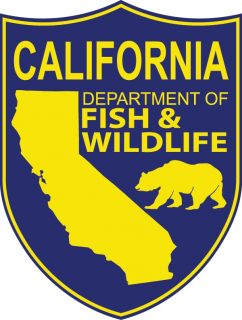 On Dec. 29, more of the California coastline will open to the commercial Dungeness crab fishery. Some previously closed areas will open at the recommendation of state health agencies, the California Department of Fish and Wildlife (CDFW) announced today. The area between Point Arena and Ten Mile River in Mendocino County will open on Dec. 29. However, due to persisting conditions of elevated domoic acid levels, the fishery will remain closed between Ten Mile River and Shelter Cove. The closed portions of the coast may open once testing by state agencies shows that domoic acid in crabs from the area no longer poses a significant risk to public health. On Dec. 29 at 12:01 a.m., the commercial Dungeness crab season will open from 38° 57.5′ N. Lat. (near Point Arena) to 39° 33.3′ N. Lat. (near Ten Mile River).The opener in this area will be preceded by a 64-hour pre-soak period commencing at 8 a.m. on Dec. 26. The area between Ten Mile River and Shelter Cove will remain closed until,,, Read the press release here 17:46
On Dec. 29, more of the California coastline will open to the commercial Dungeness crab fishery. Some previously closed areas will open at the recommendation of state health agencies, the California Department of Fish and Wildlife (CDFW) announced today. The area between Point Arena and Ten Mile River in Mendocino County will open on Dec. 29. However, due to persisting conditions of elevated domoic acid levels, the fishery will remain closed between Ten Mile River and Shelter Cove. The closed portions of the coast may open once testing by state agencies shows that domoic acid in crabs from the area no longer poses a significant risk to public health. On Dec. 29 at 12:01 a.m., the commercial Dungeness crab season will open from 38° 57.5′ N. Lat. (near Point Arena) to 39° 33.3′ N. Lat. (near Ten Mile River).The opener in this area will be preceded by a 64-hour pre-soak period commencing at 8 a.m. on Dec. 26. The area between Ten Mile River and Shelter Cove will remain closed until,,, Read the press release here 17:46
How False killer whale’s remove bait from longline fishing gear captured on video for first time
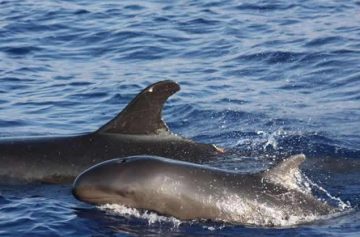 How Hawaiian false killer whales remove fish from longline fishing gear has for the first time been observed by a team of researchers and fishermen. The team, coordinated by Scripps Institution of Oceanography at the University of California San Diego scientist Aaron Thode, used video and audio recordings to observe false killer whales removing fish from a longline fishing hook, a behavior known as depredation. They gained new insight into a behavior that has caused false killer whales to entangle with fishing gear at rates deemed unsustainable by the U.S. National Marine Fisheries Service. To observe false killer whales removing fish from hooks, the Alaskan and Hawaiian research team deployed an underwater camera, sound recorder, and vibration detector on long-line fishing gear deployed by fishing vessels off Hawaii. Read the article here 16:40
How Hawaiian false killer whales remove fish from longline fishing gear has for the first time been observed by a team of researchers and fishermen. The team, coordinated by Scripps Institution of Oceanography at the University of California San Diego scientist Aaron Thode, used video and audio recordings to observe false killer whales removing fish from a longline fishing hook, a behavior known as depredation. They gained new insight into a behavior that has caused false killer whales to entangle with fishing gear at rates deemed unsustainable by the U.S. National Marine Fisheries Service. To observe false killer whales removing fish from hooks, the Alaskan and Hawaiian research team deployed an underwater camera, sound recorder, and vibration detector on long-line fishing gear deployed by fishing vessels off Hawaii. Read the article here 16:40
Chumash Heritage National Marine Sanctuary would be problematic for fisheries
 Since November, the Sierra Club, as well as Surfrider and EcoSLO, have had full-page ads in The Tribune telling of what to expect, in their opinion, from a sanctuary in our area. They indicated sums of money the sanctuary generated annually from commercial fishing and jobs in the commercial fishing industry that sanctuaries support. As a member of the fishing community for 37 years here on the Central Coast, I know what they have written is unequivocally false.The Monterey Bay National Marine Sanctuary in 1992 guaranteed us and made it part of their designation document (contract) that they would not manage fisheries. The sanctuary had multiple infractions of this rule in which they helped to close many areas to commercial fishing in flagrant disregard for our contractual agreement. Read the rest here 13:33
Since November, the Sierra Club, as well as Surfrider and EcoSLO, have had full-page ads in The Tribune telling of what to expect, in their opinion, from a sanctuary in our area. They indicated sums of money the sanctuary generated annually from commercial fishing and jobs in the commercial fishing industry that sanctuaries support. As a member of the fishing community for 37 years here on the Central Coast, I know what they have written is unequivocally false.The Monterey Bay National Marine Sanctuary in 1992 guaranteed us and made it part of their designation document (contract) that they would not manage fisheries. The sanctuary had multiple infractions of this rule in which they helped to close many areas to commercial fishing in flagrant disregard for our contractual agreement. Read the rest here 13:33
Battle To Watch: Trump Versus the “We Be’s”
 There are a lot of hot battles to watch out for in 2017. President Trump versus Congress. President Trump versus the press. President Trump versus the Democrats. President Trump versus the Chinese, Mexico, Iran, and the Islamic State. But one of the potentially most explosive of all will be Trump versus the bureaucracy. The executive branch civilian workforce numbers about 2.7 million; the uniformed military are another 1.5 million. Against that more or less permanent federal workforce of roughly 4 million people, President Trump gets to fill maybe 4,000 jobs. A lecturer at Harvard’s Kennedy School of Government, Robert Behn, writes about this as “the law of diminishing control: the larger any organization becomes, the weaker is the control over its actions exercised by those at the top.” He says bureaucrats speak of “residents” and “tourists” — the residents are the bureaucrats, the tourists are political appointees, just passing through. Or, Behn writes, a member of the permanent government refers to himself or herself as a “We Be” — as in, “We be here before you’re here. We be here after you’re here.” Read the story here 11:36
There are a lot of hot battles to watch out for in 2017. President Trump versus Congress. President Trump versus the press. President Trump versus the Democrats. President Trump versus the Chinese, Mexico, Iran, and the Islamic State. But one of the potentially most explosive of all will be Trump versus the bureaucracy. The executive branch civilian workforce numbers about 2.7 million; the uniformed military are another 1.5 million. Against that more or less permanent federal workforce of roughly 4 million people, President Trump gets to fill maybe 4,000 jobs. A lecturer at Harvard’s Kennedy School of Government, Robert Behn, writes about this as “the law of diminishing control: the larger any organization becomes, the weaker is the control over its actions exercised by those at the top.” He says bureaucrats speak of “residents” and “tourists” — the residents are the bureaucrats, the tourists are political appointees, just passing through. Or, Behn writes, a member of the permanent government refers to himself or herself as a “We Be” — as in, “We be here before you’re here. We be here after you’re here.” Read the story here 11:36
Craig Medred: Fish fight end?
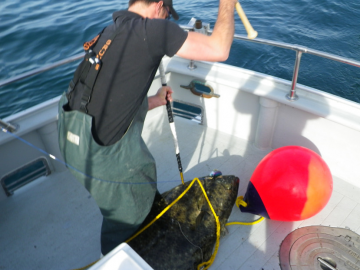 The North Pacific Fisheries Council has taken an unprecedented step to try to increase the value of halibut to the Alaska economy by allowing a yet-to-be-created, charter-boat fishing entity to buy fish from willing commercial fishing interests in order to boost sport harvests. Efforts to shift some of the halibut harvest back toward tourism businesses comes in the wake of a study indicating that “individual fishery quotas” created for the commercial halibut fishery in the early 1990s have not worked out quite as planned. A well-intentioned idea, IFQs (Eye-F-Cues) as everyone in the fishing industry calls them, were intended to shift halibut harvests away from big-boat operations toward individual fishermen working as owner-operators of fishing businesses hopefully based in Alaska. But that isn’t exactly how things turned out. Read the rest of the story here 10:58
The North Pacific Fisheries Council has taken an unprecedented step to try to increase the value of halibut to the Alaska economy by allowing a yet-to-be-created, charter-boat fishing entity to buy fish from willing commercial fishing interests in order to boost sport harvests. Efforts to shift some of the halibut harvest back toward tourism businesses comes in the wake of a study indicating that “individual fishery quotas” created for the commercial halibut fishery in the early 1990s have not worked out quite as planned. A well-intentioned idea, IFQs (Eye-F-Cues) as everyone in the fishing industry calls them, were intended to shift halibut harvests away from big-boat operations toward individual fishermen working as owner-operators of fishing businesses hopefully based in Alaska. But that isn’t exactly how things turned out. Read the rest of the story here 10:58
Gold Coast woman catches sandcrab that’s a dead ringer for Michael Jackson
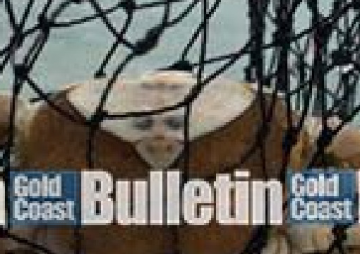 An uncanny likeness of late pop-megastar Michael Jackson has appeared on the backside of an egg-bearing female sand crab hauled from the Tweed River. In what can only be described as a Christmas miracle the top-shelling artist was reeled in — rather than caught in a pot — by Currumbin local Megan Short on Tuesday afternoon. The real Thriller was when Ms Short looked at the photos she took of the crab, which also happened to have only had one white claw. “I thought oh my god that’s Michael Jackson’s face!” the 41-year-old said. Commercial fisherman Ben Markwell has been fishing in the Tweed region for more than 30 years and had never seen anything like Michael Jackson’s face on the backside of a crab. “I’ve never seen a face like that on a blue swimmer crab,” he said. “When I saw it I went oh s*** – that’s a face there.” Read the rest here 10:14
An uncanny likeness of late pop-megastar Michael Jackson has appeared on the backside of an egg-bearing female sand crab hauled from the Tweed River. In what can only be described as a Christmas miracle the top-shelling artist was reeled in — rather than caught in a pot — by Currumbin local Megan Short on Tuesday afternoon. The real Thriller was when Ms Short looked at the photos she took of the crab, which also happened to have only had one white claw. “I thought oh my god that’s Michael Jackson’s face!” the 41-year-old said. Commercial fisherman Ben Markwell has been fishing in the Tweed region for more than 30 years and had never seen anything like Michael Jackson’s face on the backside of a crab. “I’ve never seen a face like that on a blue swimmer crab,” he said. “When I saw it I went oh s*** – that’s a face there.” Read the rest here 10:14
FISH-NL calls on province to lift restrictions on outside buyers; challenges FFAW to outline its stand
 The Federation of Independent Sea Harvesters of Newfoundland and Labrador (FISH-NL) has proposed that the provincial government lift all restrictions and allow out-of-province buyers into the provincial marketplace for all species. “An open and free market in the fishing industry would, at best, result in increased competition and more money in the pockets of fish harvesters,” says Ryan Cleary, President of FISH-NL. “At worst, it would keep local buyers honest.” Cleary made the proposal in a letter this week to Steve Crocker, Minister of Fisheries, Forestry and Agrifoods. FISH-NL also proposes that restrictions be lifted on local fish buyers to permit them to buy all species. FISH-NL’s proposal was made following an intensive, province-wide consultation with thousands of fish harvesters, whose support for out-of-province buyers is unanimous. “Fish harvesters and fish harvesters alone drive the agenda of FISH-NL,” said Cleary, “and harvesters across the province have been unanimous is saying that outside buyers should be allowed in.” FISH-NL is attempting to break harvesters away from the FFAW into their own separate union, and the consultation was part of the certification drive. The FFAW has failed to raise the issue of outside buyers because of their obvious conflict of interest in representing both harvesters and plant workers under the one umbrella. “With the decline of crab and shrimp and the growing reliance on resurging ground fish, it’s critical that harvesters be paid the highest possible price for their catch,” said Cleary. “That can only happen if the door is open to outside buyers.” 09:38
The Federation of Independent Sea Harvesters of Newfoundland and Labrador (FISH-NL) has proposed that the provincial government lift all restrictions and allow out-of-province buyers into the provincial marketplace for all species. “An open and free market in the fishing industry would, at best, result in increased competition and more money in the pockets of fish harvesters,” says Ryan Cleary, President of FISH-NL. “At worst, it would keep local buyers honest.” Cleary made the proposal in a letter this week to Steve Crocker, Minister of Fisheries, Forestry and Agrifoods. FISH-NL also proposes that restrictions be lifted on local fish buyers to permit them to buy all species. FISH-NL’s proposal was made following an intensive, province-wide consultation with thousands of fish harvesters, whose support for out-of-province buyers is unanimous. “Fish harvesters and fish harvesters alone drive the agenda of FISH-NL,” said Cleary, “and harvesters across the province have been unanimous is saying that outside buyers should be allowed in.” FISH-NL is attempting to break harvesters away from the FFAW into their own separate union, and the consultation was part of the certification drive. The FFAW has failed to raise the issue of outside buyers because of their obvious conflict of interest in representing both harvesters and plant workers under the one umbrella. “With the decline of crab and shrimp and the growing reliance on resurging ground fish, it’s critical that harvesters be paid the highest possible price for their catch,” said Cleary. “That can only happen if the door is open to outside buyers.” 09:38


































